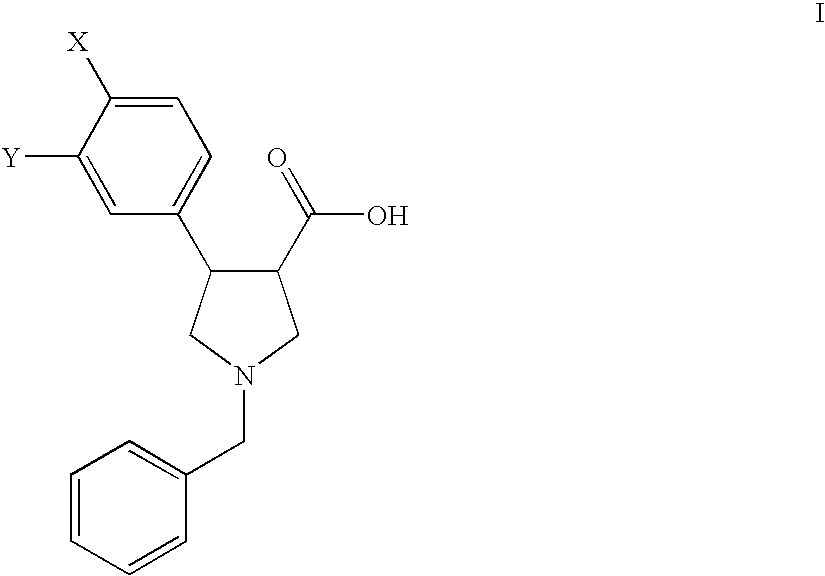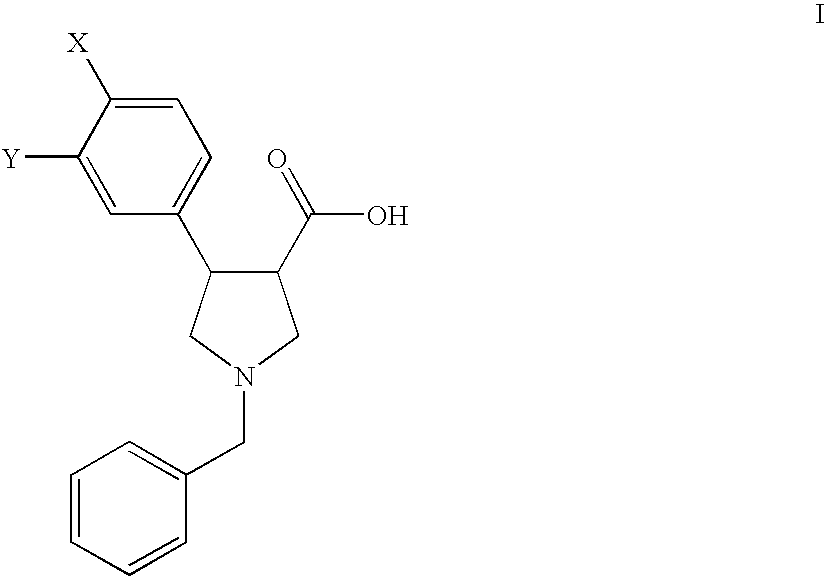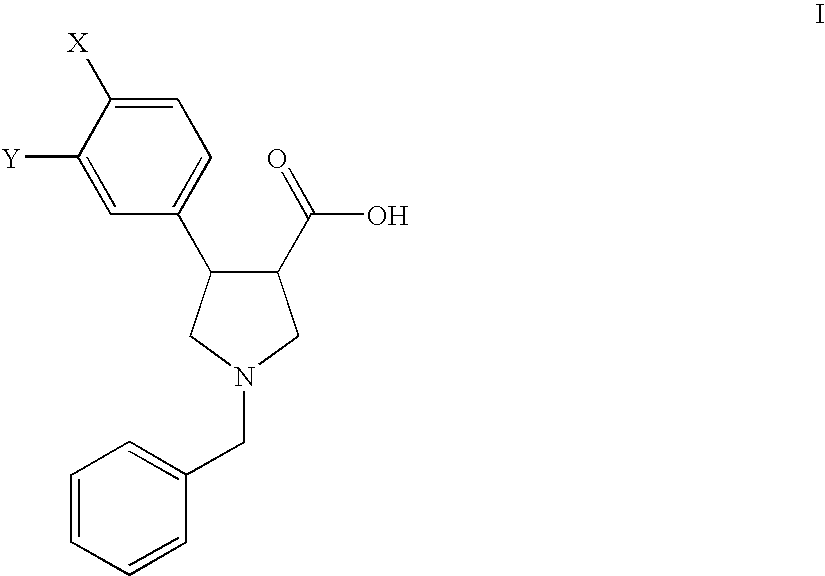Process for the preparation of pyrollidine-3-carboxylic acids
a technology of pyrollidine and carboxylic acid, which is applied in the field of process for the preparation of pyrollidine3carboxylic acid, can solve the problems of unsatisfactory reaction conditions of the process, and achieve the effect of high yield and high enantiomeric purity of the produ
- Summary
- Abstract
- Description
- Claims
- Application Information
AI Technical Summary
Benefits of technology
Problems solved by technology
Method used
Image
Examples
examples
Abbreviations
[0037]r.t.=room temperature, THF=tetrahydrofuran, TBME=tert. butyl methyl ether, LDA=lithium diisopropylamide
Preparation of the Starting Compounds of Formula II
example a
1-Benzyl-4-(4-chloro-phenyl)-2,5-dihydro-1H-pyrrole-3-carboxylic acid (IIa)
[0038]
a) (4-Chloro-phenyl)-propynoic acid ethyl ester (Va)
[0039]Under argon atmosphere, a four neck flask was charged with 1-chloro-4-iodo-benzene (130.0 g, 0.55 mol), bis(triphenylphosphine) palladium(II) chloride (7.57 g, 10.8 mmol, 2 mol %), copper(I) iodide (4.19 g, 22.0 mmol, 4 mol %) and dry THF (1.4 l). At r.t., cesium carbonate (355.3 g, 1.09 mol, 2 eq.) was added over 5 min. Afterwards propynoic acid ethyl ester (111.3 ml, 1.09 mol, 2 eq.) was added, and the reaction mixture was stirred overnight at 35° C. An additional portion of propynoic acid ethyl ester (11.1 ml, 0.11 mol, 0.2 eq.) was added, and the reaction was stirred for another 3 h at 35° C. The reaction mixture was evaporated to dryness, and the residue was taken up in toluene (0.5 l) and heptane (1 l). The resulting suspension was stirred at 40° C. for 1 h and filtered over celite. The filtrate was concentrated, and the product purified by...
example b
1-Benzyl-4-(3,4-dichloro-phenyl)-2,5-dihydro-1H-pyrrole-3-carboxylic acid (IIb)
[0042]
a) (3,4-Dichloro-phenyl)-propynoic acid ethyl ester (Vb)
[0043]Under argon atmosphere, a four neck flask was charged with 1,2-dichloro-4-iodo-benzene (222.8 g, 0.80 mol), bis(triphenylphosphine) palladium(II) chloride (11.2 g, 16.0 mmol, 2 mol %), copper(I) iodide (6.09 g, 32.0 mmol, 4 mol %) and dry THF (2.4 l). At r.t., cesium carbonate (526.6 g, 1.60 mol, 2 eq.) was added over 5 minutes. Afterward, propynoic acid ethyl ester (168.6 ml, 1.60 mol, 2 eq.) was added, and the reaction mixture was stirred overnight at 35° C. An additional portion of propynoic acid ethyl ester (17.0 ml, 0.16 mol, 0.2 eq.) was added, and the reaction was stirred for another 4 h at 35° C. The reaction mixture was evaporated to dryness, and the residue was taken up in toluene (0.8 l) and heptane (1.6 l). The resulting suspension was stirred at 40° C. for 1 h and filtered over celite. The filtrate was concentrated, and the p...
PUM
| Property | Measurement | Unit |
|---|---|---|
| pressure | aaaaa | aaaaa |
| pressure | aaaaa | aaaaa |
| temperature | aaaaa | aaaaa |
Abstract
Description
Claims
Application Information
 Login to View More
Login to View More - R&D
- Intellectual Property
- Life Sciences
- Materials
- Tech Scout
- Unparalleled Data Quality
- Higher Quality Content
- 60% Fewer Hallucinations
Browse by: Latest US Patents, China's latest patents, Technical Efficacy Thesaurus, Application Domain, Technology Topic, Popular Technical Reports.
© 2025 PatSnap. All rights reserved.Legal|Privacy policy|Modern Slavery Act Transparency Statement|Sitemap|About US| Contact US: help@patsnap.com



